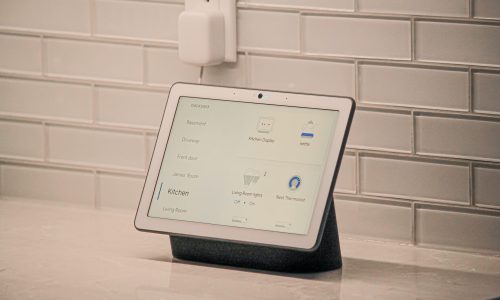As the winter draws closer, many homeowners may get anxious about how much money it will take to heat their houses. The winter season may be challenging, and homeowners want to ensure that their homes are warm and cozy without incurring excessive costs for their heating systems. Changing the temperature setting on the thermostat so that it’s appropriate for winter could be one approach to saving on heating expenses.
In this article, we will discuss the best thermostat setting for winter and ways to reduce the amount of money spent on monthly heating costs without sacrificing the comfort of your house.
Finding The Best Thermostat Setting For Winter

Your comfort level should be the most important factor when setting your thermostat in the winter. It is essential to strike a balance between the need to keep warm and the aim to limit one’s expenditures on heating bills.
The United States Department of Energy recommends setting your home’s thermostat anywhere between 68 and 72 degrees Fahrenheit throughout winter. This temperature range is acceptable for the vast majority of individuals and may assist in bringing down overall energy expenses.
Adjusting Your Thermostat Setting in Winter
You might reduce your monthly heating costs even more if you’re ready to change how you go about it. For instance, if you keep yourself warm indoors by wearing warmer clothes or wrapping yourself in blankets, you can set the temperature on your thermostat a few degrees lower than you typically would.
During the winter, this might result in considerable cost reductions for you. Changing the temperature setting on your thermostat while you are away from home during the winter may be another strategy to cut down on the cost of your heating expenses.
It is an excellent idea to reduce the temperature setting on your thermostat by 10 to 15 degrees if you will be absent for an extended period, like when you’re going away for the weekend or on vacation. You can reduce the amount of money you spend on heating while you are gone while maintaining the same degree of comfort when you return.
Programmable and Smart Thermostats

If you have a programmable thermostat, you can easily set it to adjust the temperature based on your schedule. For instance, you might change your thermostat to increase the temperature in the evening when you get home but reduce it during the day while you are at work. This would allow you to save money on your energy bills.
You won’t need to alter the temperature on the thermostat throughout the day manually, so you won’t have to worry about remembering to do it. This will help you save money on your heating expenses.
Investing in a smart thermostat is another way to reduce the money spent on monthly heating costs. These thermostats can learn your routine and change the temperature based on that information.
For instance, if you leave for work at 8:00 in the morning and don’t return until 6:00 in the evening, your smart thermostat will regulate the temperature so that your house is comfortable while you are there but doesn’t waste energy while you are gone. This will allow you to save money in the long run.
Putting a stop to air leaks and making improvements to the insulation
In addition to adjusting your thermostat setting for winter, there are other steps you can take to save money on heating bills. Sealing up any air leaks in your house is one of the easiest things you can do to improve its energy efficiency.
This may include the spaces surrounding windows and doors and any other cracks or crevices allowing air to escape. You can help keep warm air in your house and cold air out of your home by sealing these leaks, which can help you save money on heating your home.
Increasing the amount of insulation in your house is another strategy to reduce the cost of your monthly heating bill. Due to insufficient insulation, you may be letting a large quantity of heat escape from your house via the walls and the roof. Lower your monthly energy bills and improve the ability of your home to retain warm air by installing insulation.
Performing Maintenance on Your Heating System
It is essential to check that your heating system is operating as it should at all times. If your heating system is old or needs repairs, it uses more energy than is required to keep your house at a comfortable temperature. You can guarantee that your heating system is operating well and save money on your monthly heating expenses if you get it examined and serviced on a regular basis.
Takeaway
Finding the best winter thermostat setting may help homeowners save money on their heating costs while still keeping the temperature in their homes comfortable. The temperature on your thermostat during the winter should be between 68 and 72 degrees Fahrenheit.
However, modifying your daily routine, using programmable or smart thermostats, sealing air leaks, enhancing insulation, and maintaining your heating system may all lead to even larger savings than the optimal temperature setting. Homeowners may avoid overpaying on their heating expenses during the winter months by following these guidelines, allowing them to maintain their comfort level throughout the season.
If you’re looking for installation or repair advice regarding HVAC systems, consider calling us at (602) 266-5247 or scheduling our service here.













